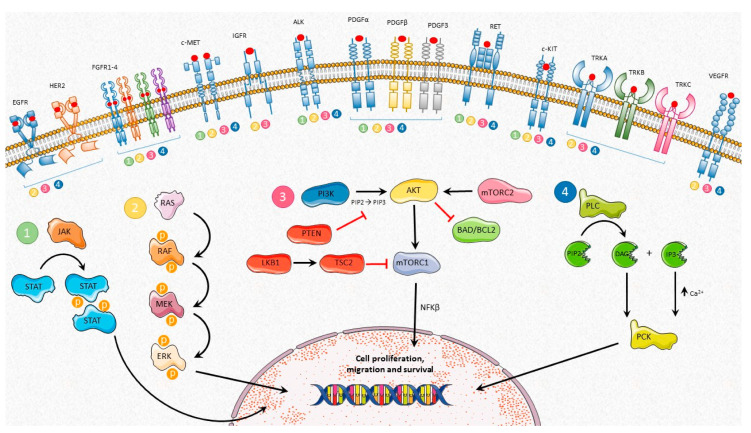Figure 1.
Above are represented the interaction between various signaling pathways activated through tyrosine kinase receptors (TKR) and involved in tumor proliferation. (1) Once a ligand binds to the receptor, two STAT proteins are phosphorylated by JAK forming a dimer which enters the nucleus, causing the transcription of target genes. (2) After the TKR is activated by a ligand, Ras dimerizes and binds Raf, promoting Raf activation. Active Raf phosphorylates and activates MEK1/2 which induces ERK1/2 activation, leading to transcription activation. (3) PI3K phosphorylates phosphatidyl inositol-bisphosphate (PIP2) to PIP3, a process that can be reversed by the action of PTEN. PIP3 causes the activation of Akt in the plasma membrane, thereby activating the mTOR complex, one of the major pathways involved in tumorigenesis. (4) PLC hydrolyzes PIP2, in this way forming diacylglycerol (DAG) and PIP3, which activate PKC and intracellular calcium mobilization, respectively.

